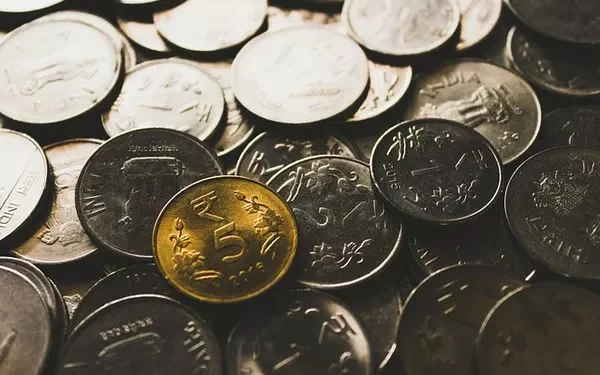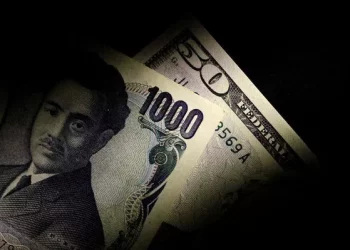The foreign exchange market, also known as Forex or FX, is a dynamic arena where the value of one currency is traded against another. Exchange rates play a crucial role in international trade, tourism, and investments. One common question that arises for those dealing with international transactions is, “What is Qatar to INR?” This question pertains to the exchange rate between the Qatari Riyal (QAR) and the Indian Rupee (INR), two currencies representing Qatar and India, respectively.
In this article, we will explore the Qatari Riyal (QAR) to Indian Rupee (INR) exchange rate, the factors that influence it, how it affects trade and financial transactions, and how to analyze the exchange rate for optimal financial decisions.
Understanding the Currency Pair: QAR/INR
The currency pair QAR/INR represents the exchange rate between the Qatari Riyal (QAR) and the Indian Rupee (INR). The exchange rate is determined by the value of one unit of Qatari Riyal in terms of Indian Rupees. For example, if the exchange rate is 1 QAR = 20 INR, it means that for every 1 Qatari Riyal, one would get 20 Indian Rupees in exchange.
In the context of global trading, currencies are typically quoted in pairs. The first currency (QAR in this case) is called the “base currency,” and the second currency (INR) is called the “quote currency.” Thus, the exchange rate reflects how much of the quote currency (INR) is required to purchase one unit of the base currency (QAR).
It is essential to note that exchange rates fluctuate due to a variety of factors, and as such, the QAR/INR exchange rate changes over time.
The Role of the Qatari Riyal in the Global Economy
Qatar is a small but wealthy country located in the Arabian Gulf. It is known for its vast reserves of oil and natural gas, which have made it one of the richest nations per capita in the world. The Qatari Riyal (QAR) is pegged to the US Dollar (USD) at a fixed exchange rate of 1 QAR = 0.27 USD. This peg to the US Dollar provides stability to the Qatari currency, which can influence its exchange rate with other currencies like the Indian Rupee (INR).
The wealth of Qatar, bolstered by its energy exports, means that the Qatari Riyal remains relatively stable. However, fluctuations in global oil prices and changes in the broader economic environment can indirectly affect the exchange rate of the Qatari Riyal against other currencies.
The Role of the Indian Rupee in the Global Economy
India, with its large population and rapidly growing economy, plays a significant role in the global financial system. The Indian Rupee (INR) is the official currency of India and is used for domestic transactions across the country. While the Indian Rupee is not pegged to any foreign currency, its value is determined by market forces in the open currency markets.
The value of the Indian Rupee is influenced by a variety of factors, including India’s trade balance (exports versus imports), foreign direct investment (FDI), inflation, interest rates, and the broader global economic environment. A strong Indian economy generally supports a stable INR, while factors such as trade deficits, inflation, or geopolitical events can lead to depreciation.
The Indian Rupee has been historically prone to fluctuations, as the country’s economy is still developing and is susceptible to external factors such as changes in global oil prices or foreign investment inflows.
Factors Affecting the QAR to INR Exchange Rate
Several factors influence the exchange rate between the Qatari Riyal (QAR) and the Indian Rupee (INR). These factors include:
1. Oil Prices
As mentioned earlier, Qatar is one of the leading oil producers globally, and its economy is heavily reliant on the revenues from oil and natural gas exports. Oil prices are a key driver of the Qatari economy and, by extension, the value of the Qatari Riyal.
When oil prices rise, Qatar’s revenue increases, strengthening the Qatari Riyal. Conversely, when oil prices fall, the Qatari economy may face a slowdown, potentially leading to depreciation in the value of the Qatari Riyal. This can also affect the QAR/INR exchange rate.
2. Economic Performance in Qatar
Qatar’s economic performance and fiscal health directly impact the value of its currency. Strong economic growth, high levels of investment, and a stable political environment typically result in a stronger Qatari Riyal. On the other hand, economic downturns or political instability could weaken the currency, potentially leading to a higher exchange rate of INR for QAR.
3. Interest Rates and Inflation
Interest rates play a critical role in the exchange rate dynamics between any two currencies. When interest rates in Qatar rise relative to those in India, investors are more likely to flock to Qatar for higher returns on investment. This can lead to an appreciation of the Qatari Riyal against the Indian Rupee.
Inflation, on the other hand, erodes the purchasing power of a currency. If inflation in Qatar remains low and stable, the Qatari Riyal may appreciate relative to the Indian Rupee, which may experience higher inflation in a growing economy like India.
4. Political Stability and Government Policies
Qatar is known for its political stability, which contributes to investor confidence in the Qatari Riyal. Government policies, such as fiscal policy, trade policies, and foreign exchange policies, can also affect the value of the Qatari Riyal. A shift in government policy or changes in Qatar’s political landscape could lead to a fluctuation in the QAR/INR exchange rate.
In contrast, India’s political environment is more complex, and while it is a democratic country with regular elections, any political instability or uncertainty can negatively impact the value of the Indian Rupee.
5. Trade Relations between Qatar and India
Qatar and India have strong trade ties, with India being one of Qatar’s major trading partners. Qatar exports natural gas, petroleum products, and other goods to India, while India exports a range of products, including machinery, vehicles, and foodstuffs, to Qatar.
Changes in trade relations, such as the introduction of new trade tariffs or agreements, can affect the supply and demand for each country’s currency, influencing the exchange rate. A surge in imports or exports between the two countries could also impact the QAR/INR exchange rate.
6. Remittances
Another key factor affecting the QAR/INR exchange rate is the flow of remittances from Qatari-based workers to India. India is one of the largest recipients of remittances globally, and many Indian expatriates live and work in Qatar. These remittances can lead to an increase in demand for the Indian Rupee, affecting the exchange rate. If remittance flows increase, there could be upward pressure on the INR.
7. Global Economic Conditions
Lastly, the broader global economic environment has an impact on currency exchange rates. Global factors such as changes in US monetary policy, global inflation trends, and geopolitical risks (e.g., conflicts or pandemics) can lead to fluctuations in the QAR/INR exchange rate.
For example, during periods of global economic uncertainty, investors tend to flock to safe-haven currencies like the US Dollar, which could influence the value of the Qatari Riyal (since it is pegged to the Dollar). Similarly, global events can impact India’s economic performance, which, in turn, affects the Indian Rupee.
How to Monitor and Analyze the QAR to INR Exchange Rate
For individuals and businesses engaged in currency exchange or international transactions, it is crucial to understand how to monitor and analyze the QAR to INR exchange rate. Here are some tips for doing so:
1. Use Online Currency Conversion Tools
Various online platforms and mobile apps provide real-time exchange rate data for the QAR/INR pair. These tools allow users to quickly convert Qatari Riyals to Indian Rupees and vice versa. Popular financial websites, such as XE, OANDA, or Forex platforms, offer free tools to track currency pairs.
2. Track Economic News
Staying updated on global and regional economic news is essential for understanding how the QAR/INR exchange rate might move. Pay attention to reports on oil prices, economic growth data for Qatar and India, interest rate changes, and major political events that could influence the currencies.
3. Work with Forex Experts
If you’re a business or individual making large foreign exchange transactions, it may be beneficial to consult with a Forex expert or currency broker. These professionals can provide insights into market trends, assist with hedging strategies, and help navigate volatility.
4. Consider Using Hedging Instruments
For businesses and investors with significant exposure to the QAR/INR exchange rate, hedging instruments such as forward contracts or options can help mitigate currency risk. These tools allow you to lock in a specific exchange rate for a future date, reducing the impact of unfavorable currency fluctuations.
Conclusion
The exchange rate between the Qatari Riyal (QAR) and the Indian Rupee (INR) is influenced by a complex set of factors, including oil prices, economic conditions in Qatar and India, interest rates, inflation, political stability, and global economic conditions. Understanding these factors is essential for individuals and businesses who need to manage their exposure to currency risk or are involved in international trade.
By staying informed and utilizing the right tools and strategies, you can make informed decisions when exchanging currencies between Qatar and India. Whether you are an investor, a business owner, or an individual making remittances, knowing how to navigate the QAR/INR exchange rate is key to optimizing your financial outcomes in the global market.
Related Topics:


























